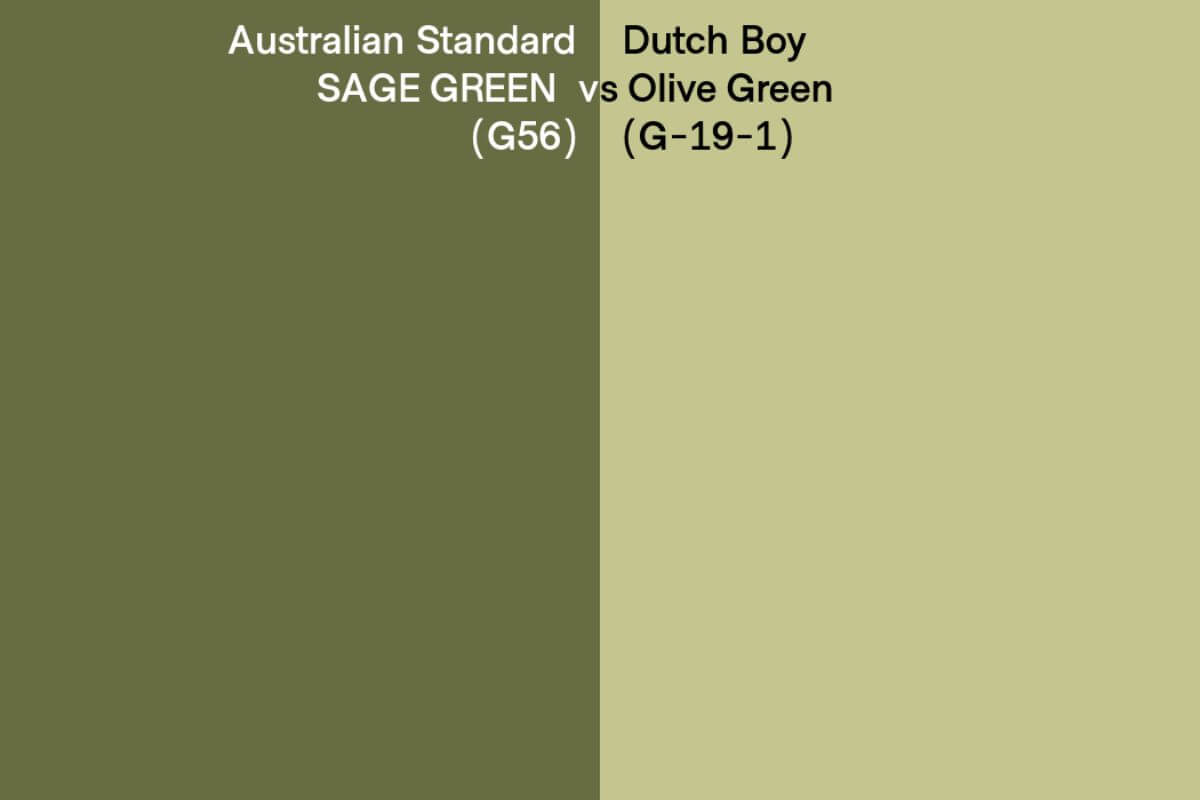Introduction
When it comes to decorating our living spaces, one of the most crucial decisions we face is choosing the right color scheme. Colors have a profound impact on our mood, emotions, and overall ambiance of a room. In recent years, both olive green and sage green have gained popularity as soothing and versatile hues for interior design. In this article, we’ll delve into the subtle yet distinct differences between these two beautiful colors, exploring their unique characteristics and potential applications.
Understanding Olive Green and Sage Green
What is Olive Green?
Olive green is a warm and earthy color that gets its name from the fruit of the olive tree. It is a blend of green and brown, often leaning more towards brown tones, which gives it a slightly muted and subdued appearance. Olive green is often associated with nature, harmony, and balance. Its calming effect makes it a popular choice for interior design, especially in spaces where a touch of nature is desired.
What is Sage Green?
Sage green, on the other hand, is a cooler and softer hue that takes its inspiration from the leaves of the sage plant. It is a pale, grayish-green color that exudes a sense of tranquility and freshness. Sage green has a gentle and timeless quality, making it a favorite among interior designers who seek to create a serene and elegant ambiance.

Comparing Olive Green and Sage Green
1. Color Tone
The primary difference between olive green and sage green lies in their color tones. Olive green tends to have warmer undertones, leaning towards brown and gold, whereas sage green features cooler undertones with hints of gray and blue.
2. Intensity
Olive green is generally a more intense color compared to sage green. Its deeper and richer saturation adds depth and character to a room. On the other hand, sage green’s softer and subtler tone imparts a delicate and airy feel to the space.
3. Versatility
Both colors are highly versatile and can be used in various design styles. Olive green’s earthy nature makes it suitable for creating rustic and cozy settings, while sage green’s lightness lends itself well to contemporary and minimalist aesthetics.
4. Complementary Colors
Olive green pairs beautifully with warm hues like mustard yellow, terracotta, and burnt orange. In contrast, sage green harmonizes flawlessly with cool shades like lavender, dusty pink, and pale blue.
5. Applications
Olive green is often a popular choice for furniture, upholstery, and accent pieces. Its boldness adds a touch of drama and sophistication to any room. On the other hand, sage green is frequently used for walls, curtains, and bedding, as it imparts a calming and refreshing atmosphere.

Utilizing Olive Green and Sage Green in Interior Design
When incorporating olive green or sage green into your interior design, consider the overall theme and desired ambiance of the space. Here are some practical tips to make the most of these colors:
H1: Creating a Rustic Oasis
Embrace the warmth of olive green by using it in combination with wooden furniture, exposed brick walls, and soft lighting. Add some indoor plants to enhance the natural vibe.
H1: A Serene Modern Retreat
Opt for sage green as the primary wall color and complement it with white or light-colored furniture to create an airy and modern setting. Add metallic accents for a touch of sophistication.
H2: Making a Statement
Use olive green as an accent color through statement pieces like a plush sofa, an area rug, or bold wall art. Let the color stand out against neutral backgrounds.
H2: Soft and Subtle Elegance
Dress up your bedroom in sage green bedding, curtains, and cushions to evoke a sense of tranquility and luxury. Pair it with creamy whites and soft grays for a harmonious look.
Conclusion
In the eternal debate of olive green vs. sage green, both colors bring their unique charm and style to interior design. Olive green offers warmth and depth, while sage green exudes serenity and sophistication. Whether you choose one over the other or combine them in creative ways, these beautiful hues are sure to elevate the aesthetics of your living spaces.
FAQs
Q1: Can I use olive green and sage green together?
Absolutely! Olive green and sage green complement each other beautifully. Consider using them together in different elements of your décor, like combining olive green upholstery with sage green walls or vice versa.
Q2: Which color is better for a small room?
For a small room, sage green is a great choice. Its light and airy nature can make the space feel more open and spacious.
Q3: Are olive green and sage green suitable for a modern décor style?
Yes, both colors work well in modern décor styles. Olive green can add a touch of drama and richness, while sage green contributes to a serene and contemporary ambiance.
Q4: Can I use olive green or sage green in a coastal-themed room?
While olive green might not be the typical choice for a coastal-themed room, sage green can work wonders in creating a soothing coastal vibe when combined with sandy beige and oceanic blues.
Q5: What other colors can I pair with olive green or sage green?
For olive green, consider pairing it with warm colors like mustard yellow, burnt orange, or deep red. For sage green, opt for cool shades like lavender, dusty pink, or pale blue to achieve a harmonious balance.



